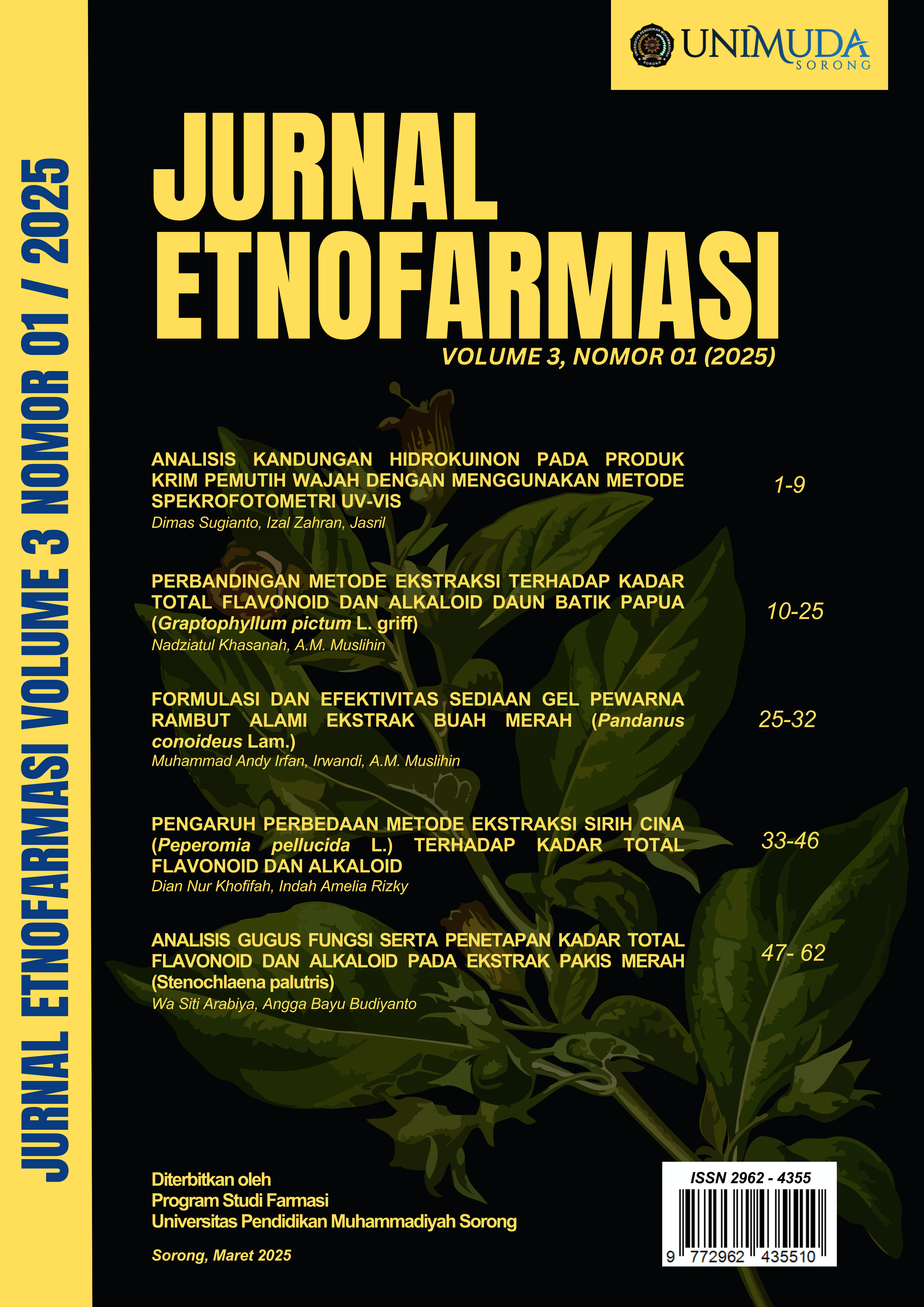PENGARUH PERBEDAAN METODE EKSTRAKSI SIRIH CINA (Peperomia pellucida L.) TERHADAP KADAR TOTAL FLAVONOID DAN ALKALOID
DOI:
https://doi.org/10.36232/jurnalfarmasiunimuda.v3i01.1972Keywords:
Peperomia pellucida L.; Extraction; Functional Grups; FTIRAbstract
Chinese betel has benefits as a traditional medicine to treat gout, rheumatism, and arthritis. The compounds contained in Chinese betel include flavonoids, saponins, tannins, steroids, and terpenoids which have various pharmacological activities, such as anti-inflammatory, antibacterial, diuretic, antifungal, and antiviral. This study was conducted to determine the effect of different extraction methods on the compound content and to determine the effect of these different extractions on the total levels of flavonoids and alkaloids contained in the Chinese betel plant (Peperomia pellucida L.) using three extraction methods, namely maceration, soxhletation, and reflux. The highest yield was obtained with the reflux method of 20%, then with the soxhletation method (12%) and maceration (10%). Phytochemical tests showed the presence of alkaloids, flavonoids, tannins, terpenoids, and steroids in the leaf extract, while saponins were not detected. The results of the FTIR analysis showed the presence of O-H, C=C, -C-NO2, and C-O functional groups, thus supporting the results of phytochemical screening. Determination of total flavonoid levels showed that the reflux method produced the highest levels (47.5095 mg/g), while the highest alkaloid levels were obtained from the maceration method (26.9333 mg/g).









